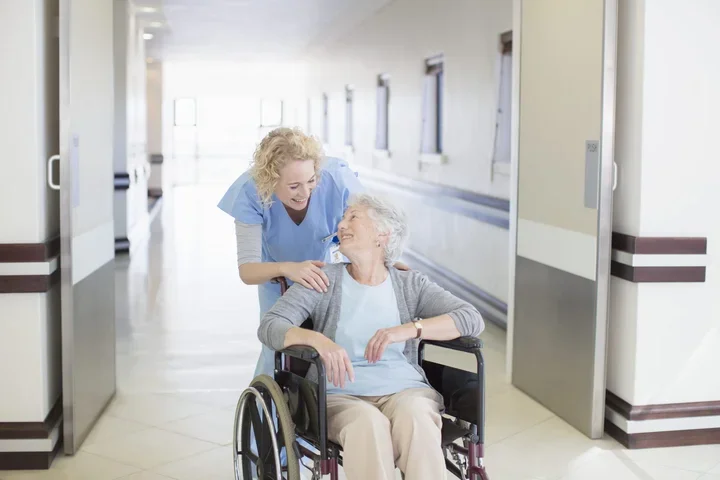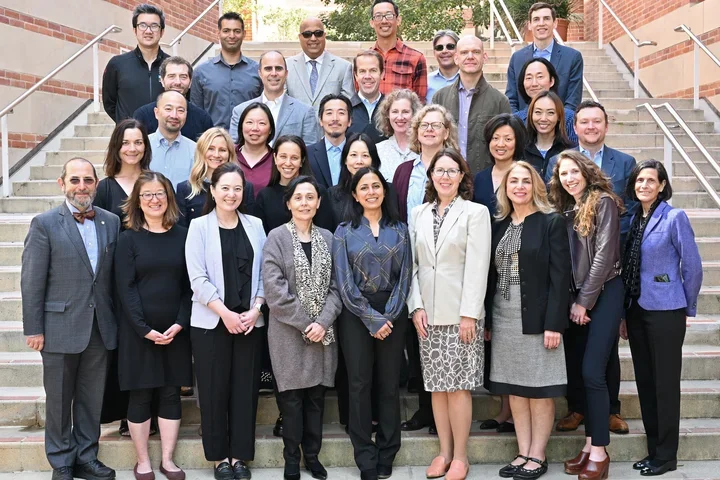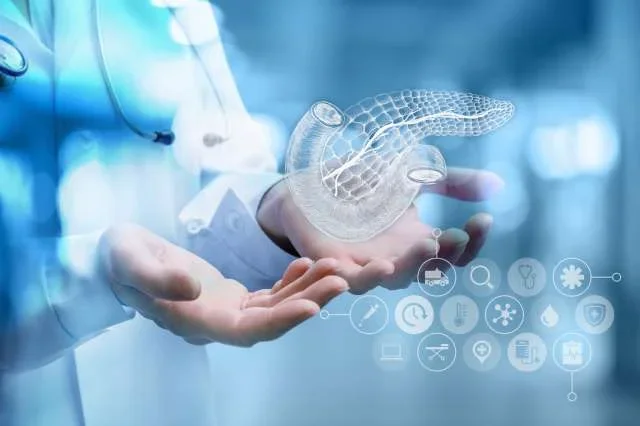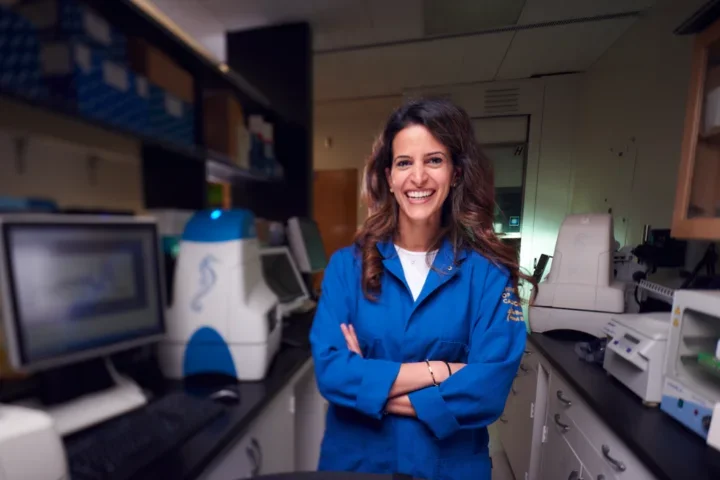What Does a Hematopathologist Do?
A UCLA Doctor Explains
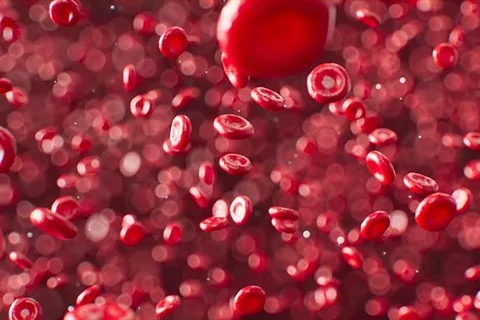
A Day in the Life of Dr. Sheeja Pullarkat, Director of UCLA's Hematopathology Fellowship Program
Although most doctors focus on treating diseases, pathologists study their origin—what happens at the cellular level—in order to determine their cause and find out how to diagnose them. The complex nature of this basic science is what attracted Sheeja Pullarkat, MD, to medical pathology.
"In my second year of medical school, I took a pathology course and realized that, without understanding the basics of something, you cannot get the whole picture," explains Dr. Pullarkat, director of UCLA's hematopathology fellowship program and associate professor in the David Geffen School of Medicine at UCLA. "I wanted that in-depth knowledge."
Dr. Pullarkat specializes in hematopathology, the study of blood diseases. "Every major organ system has its own subspecialists," she explains. "During my residency, I worked on several projects involving leukemia and mast cell disorders, and became interested in bone marrow diseases." Hematopathology also provided the opportunity to work more closely with her husband, a hematologist. "I felt that by diagnosing the diseases hematologists treat, we could learn from each other."
But what does a hematopathologist do? And what makes someone a good fit for medical pathology?
What Is a Hematopathologist?
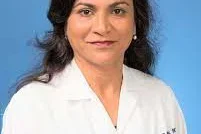
Dr. Pullarkat's schedule varies by the day, but her responsibilities fall into three categories: diagnosing, teaching and research.
"Each morning, my team shows me glass slides from the lab," she explains. "We sit around a multi-headed microscope and discuss the morphology of the tissue samples, compare what we're seeing with the patient's clinical history and order additional studies to confirm our suspicions. Then I call physicians to share results."
Along with training residents and fellows, Dr. Pullarkat teaches introductory hematology courses for second-year medical students. And with the time she has left, she pursues research on bone marrow disorders including mast cell disease and acute leukemia.
"I'm also trying to correlate chemokine receptor expression with the clinical presentation of hematologic malignancies," she adds. "These are expressed by neuroplastic cells, and I want to identify specific chemokine receptors on cancer cells in order to understand why they migrate to certain parts of the body."
The Highs and Lows of Medical Pathology
Dr. Pullarkat's favorite part of the job is making diagnoses—being able to answer the question, "Why is this patient here?"
"Often these results aren't good," she admits. "But at least clinicians can give their patients an answer and deliver the appropriate treatment."
What makes the work rewarding, however, is exactly what makes it challenging, especially when she doesn't have all the information required to make a diagnosis. When outside hospitals request expert consultations, for example, they often submit slides without a clinical history. "Also, if there isn't enough biopsy material, that can be frustrating, because the patient has to go through the procedure again."
The Makings of a Pathologist
For students considering a career in medical pathology, Dr. Pullarkat has two pieces of advice: be prepared for a lifetime of learning, and keep an open mind.
"Pathology is a rapidly evolving field," she explains. "We have all these new molecular tests—next-generation DNA sequencing, flow cytometry, immunostaining, cytogenetics—that tell us the diagnosis, survival prognosis and treatment options. Keeping up with these advances requires a lot of reading and learning. A pathologist is always a student."
Just as importantly, pathologists must be willing to consider many different possibilities. "It's like solving a puzzle," she suggests. "The morphology we see on slides is one puzzle piece. We also have to consider the patient's symptoms, labs and medical history. We only get one chance to make a diagnosis, because that determines medical treatment. So we must be patient, take time to really think about it and question ourselves. It's a very important job, and pathologists really have to feel that responsibility."
